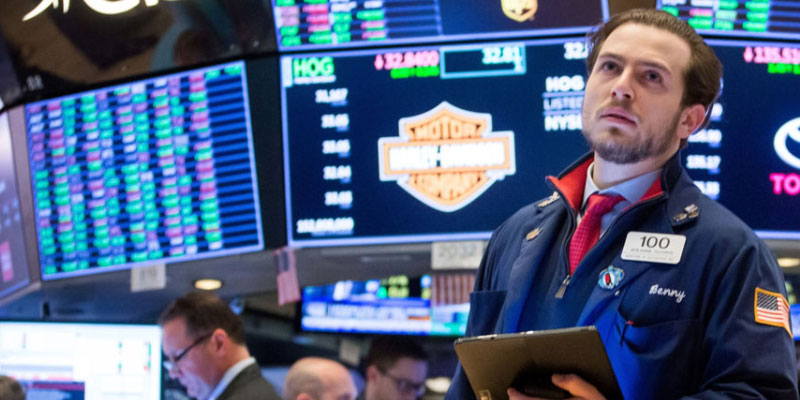The Rise and Fall of the Vancouver Stock Exchange: Lessons from a Unique Market
Nov 01, 2024 By Darnell Malan
The Vancouver Stock Exchange (VSE), once a vibrant hub for trading in Canada, offers a fascinating story of ambition, controversy, and evolution. Established in 1907, the VSE became known as a platform for small-cap stocks, particularly in the mining and oil sectors.
Its reputation, however, was marred by a history of fraudulent activities and lax regulatory oversight, earning it the dubious title of the "scam capital of the world." This article will explore what the VSE was, how it operated, the factors that led to its decline, and its lasting impact on the Canadian financial landscape.
What Was the Vancouver Stock Exchange?
The Vancouver Stock Exchange was one of Canada's primary stock exchanges, ranked third in size after the Toronto Stock Exchange (TSX) and the Montreal Stock Exchange. It primarily catered to smaller companies, especially those in the resource sector. At its height, the VSE listed approximately 2,300 stocks, many of which were linked to mining, oil, and gas exploration. The companies on the VSE typically had limited assets, often owning only the rights to undeveloped mines or exploration projects.

The Appeal of the VSE
The VSE appealed to venture capitalists and investors looking for high-risk, high-reward opportunities. Many investors were drawn in by the potential for significant returns from the mining boom and the chance to invest in innovative technologies. The exchange facilitated direct public investment into these early-stage companies, which is a notable contrast to today's market practices, where companies often seek private funding before going public.
How the VSE Operated
The operational framework of the Vancouver Stock Exchange was characterized by a unique trading environment that catered to a specific type of investor. The exchange allowed for a variety of trading practices, including the buying and selling of penny stocksshares priced under a dollar, often associated with significant risk. While the VSE provided a venue for investment, it also had a reputation for speculative trading, where prices could be artificially inflated and manipulated.
Trading Practices and Investor Experience
Investors on the VSE were often exposed to highly volatile stocks with little oversight or regulatory scrutiny. The trading environment fostered speculation, where investors relied more on market rumors and hype than on solid financial fundamentals. This speculative nature attracted many inexperienced investors, who were drawn by the allure of quick profits. However, the high volatility also meant that many investors faced substantial losses, contributing to the exchange's notoriety.
The Rise of Fraud and Regulatory Failures
The Vancouver Stock Exchange (VSE) became infamous for its deep-seated issues with fraud and regulatory shortcomings, particularly during the late 20th century. This era was marked by a high prevalence of dubious business practices that ultimately damaged the exchange's reputation and investor trust.
Nature of Fraud
At its peak, a significant portion of the companies listed on the VSE were involved in fraudulent activities. Estimates suggested that between 20% to 30% of the stocks were implicated in some form of deceit. The types of fraud commonly seen included "pump and dump" schemes, where promoters would artificially inflate the price of a stock through misleading information. Once the stock reached a certain price, they would sell their shares for a profit, leaving unsuspecting investors holding worthless assets.
Regulatory Challenges
The VSE operated in an environment characterized by minimal regulatory oversight. The existing regulations were insufficient to deter fraudulent activities or protect investors. This lack of oversight created a fertile ground for speculation, where investors often relied more on market rumors than on sound financial practices. The complacency in regulation allowed many unscrupulous operators to thrive, further eroding the integrity of the marketplace.
Consequences of Fraud
As fraudulent activities proliferated, investor confidence plummeted. Reports of significant financial losses due to fraud became common, leading many investors to withdraw their capital from the VSE. This decline in trust significantly affected trading volumes and pushed capital toward more reputable exchanges, like the Toronto Stock Exchange. Despite attempts to implement reforms, the damage to the VSE's reputation proved irreparable.
The Path to Merger
By the late 1990s, the cumulative effects of fraud and regulatory failures culminated in the decision to merge the VSE with the Alberta Stock Exchange and the Bourse de Montreal, forming the Canadian Venture Exchange (CDNX). This merger aimed to establish a more credible trading environment, as the new exchange implemented stricter regulations to protect investors and enhance market integrity.
Lessons Learned
The VSE's history serves as a cautionary tale regarding the essential role of regulatory oversight in financial markets. It underscores the need for robust investor protection measures and vigilant enforcement to maintain market integrity. The VSE's legacy continues to inform regulatory practices today, emphasizing the importance of transparency, accountability, and investor confidence in fostering a healthy investment landscape.
The Merger and Transformation into the TSX Venture Exchange
In 1999, facing increasing pressure from regulators and a declining reputation, the Vancouver Stock Exchange was merged with the Alberta Stock Exchange and the Bourse de Montreal to form the Canadian Venture Exchange (CDNX), which later became the TSX Venture Exchange (TSX-V). This merger aimed to create a more robust and credible trading environment for venture capital investments.

Post-Merger Landscape
The TSX Venture Exchange inherited many of the VSE's listings but implemented stricter regulatory measures to restore investor trust. Over the years, the TSX-V has evolved into a leading platform for venture capital, catering to a diverse range of industries, including technology and biotechnology, while maintaining a focus on resource-based companies.
Conclusion
The Vancouver Stock Exchange was a significant chapter in Canada's financial history, embodying the highs and lows of speculative investing. While it provided opportunities for growth and innovation, its legacy is overshadowed by the widespread fraud and lack of regulatory oversight that plagued its operations.
The evolution into the TSX Venture Exchange marks an effort to learn from these past mistakes, emphasizing the importance of regulation in fostering a healthy investment environment. As the financial landscape continues to evolve, the story of the VSE remains a poignant reminder of the need for vigilance and accountability in the world of investing.
Market Expectations as Strategists Monitor the BOJ’s Moves and Governor Ueda’s Potential Influence

The Ultimate Guide to Curated ETFs: Building Your Model Portfolio

Constant Proportion Debt Obligation (CPDO): What It Is and Why It Has Risks

All You Should Know About Not Knowing About Your Stock's Basis Costs

Deciding Between Savings Accounts and Bonds: What You Need to Know

What Is Warren Buffett's Investment Strategy?

Premium vs Discount Bonds: Which Should You Buy?

Navigating Artificial Intelligence: Lessons from the Financial Sector

NatWest’s Investment in Tech Innovation

